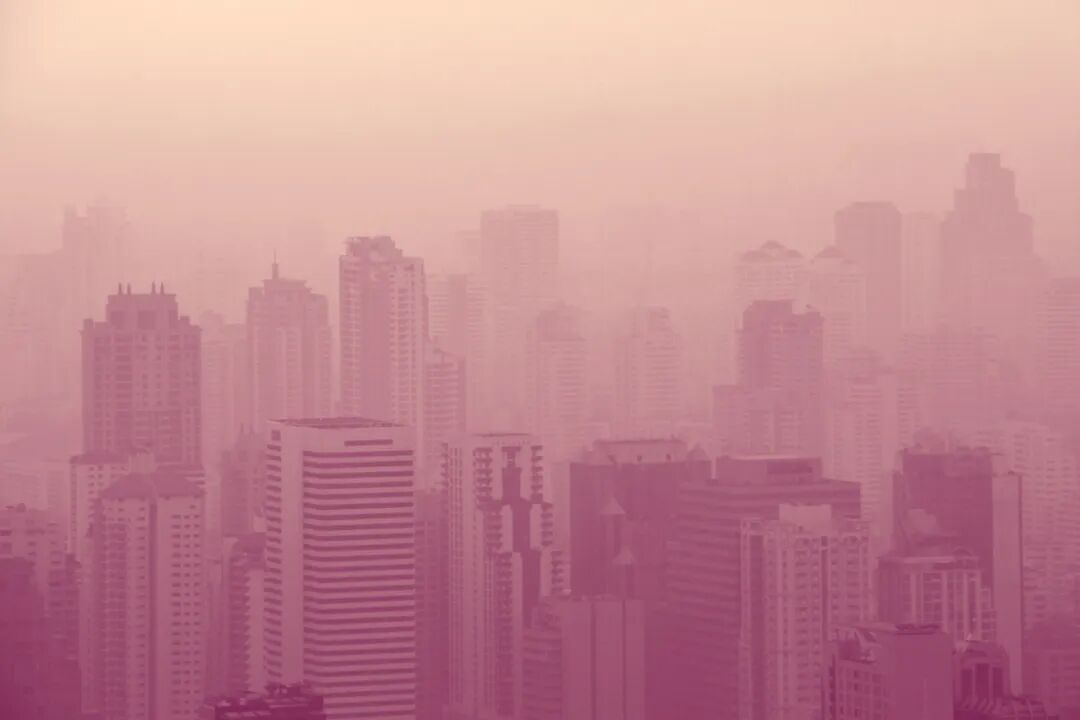

AI tools provide targeted information on pollution exposure.
Image source:Getty Images
Will Hicks
Co-founder and Chief Scientific Officer of Air Aware Labs
Louise Thomas
Co-founder and CEO of Air Aware Labs
- Artificial Intelligence (AI) By analyzing large, complex datasets—from sensors, satellites, and even crowdsourced data—we’ve improved our ability to detect and predict urban air pollution.
- AIThe tool provides targeted information on pollution exposure, enabling people to make healthier choices in their daily lives.
- AlthoughAIIt holds tremendous potential, but its deployment must be inclusive and ethically sound. If implemented carelessly,AIIt could exacerbate existing inequalities, particularly in underserved areas.
To achieve ambitious goals, humanity has reshaped the world—cities now soar skyward with towering skyscrapers, and digital networks have become seamlessly woven into everyday life. Yet in the process, we’ve also filled the air with invisible yet menacing threats. All around us, the atmosphere is often polluted, choked with pollutants that silently infiltrate our lungs.
Air pollution in cities is unique to our era.Challenge, itsSourceComplex,Highly versatile performance, and increasinglyDifficult to tackle with traditional methods
However, asCities are becoming smarter., a powerful new ally is emerging in the fight for cleaner air: artificial intelligence (AI)
IfAICan it allow us to see invisible threats? IfAICan it help us breathe more easily, live longer, and reduce the health damage caused by invisible, toxic exposures?
AIIt provides a brand-new set of tools that, by analyzing vast datasets, uncover hidden patterns, forecast future conditions, and optimize how cities operate to address pressing challenges. This article explores how these tools can be leveraged in a rapidly urbanizing world.AITools to monitor, manage, and ultimately reduce urban air pollution levels and exposure.
Understanding the enemy
Billions of people worldwide breathe air with pollutant levels exceeding those recommended by the World Health Organization.WHO) Guiding standards for air quality, including inhalable particulate matter (PM2.5)Nitrogen Dioxide (NO₂) and so on. This results in more than8 million premature deaths, and enable the global economyEvery yearLoss8 trillion U.S. dollars
Historically, our understanding of air pollution has relied on a relatively sparse and costly network of fixed monitoring stations. While reference-grade monitoring stations andSuper Site(Advanced, high-density monitoring stations) can provide valuable data on chemical compositions, particle sizes, and more—but they offer very limited insights into ultra-local exposures (the variations people experience as they move through urban environments).
Today, thanks toAI, modeling and sensor networks—this landscape is shifting.
Smarter measurement and smarter cities
Machine LearningEarly applications in air quality have primarily focused on models such as random forests, gradient boosting, and hybrid approaches. This has enabled researchers to achieve greater accuracy inPredicting the city's air pollution levels, while excludingMixed weather and other variablesThe impact.
This predictive capability unlocks new insights into the effectiveness of policy interventions.
In recent years, machine learning methods have also been used to analyze datasets containing information such as pollution levels, weather conditions, traffic flow, industrial activities, and other data points.Enhancing the measurement accuracy of air quality sensorsAndAttributing complex pollution sources
Combining sensors, satellite imagery, and even crowdsourced data,AIToday, it’s possible to generate high-resolution pollution maps in near real time to track exposure levels and inform public health interventions.
One example is the one developed by Imperial College London.DyNA System. The system combines physical modeling withAITechnology, using custom-builtRecurrent Neural NetworkTo process time-series data and predict pollution events.
When used in conjunction with data assimilation techniques,DyNAReal-world observational data can be leveraged to enhance both the accuracy and speed of air quality predictions. Google'sAir Quality APIIt also integrates multiple inputs to estimate global pollutant concentrations.
"Air pollution has the most severe impact on the poorest populations, whileAI"Could potentially exacerbate these inequalities."
Empowering citizens and urban planners
A smarter system leads to wiser decisions—not just for cities, but for citizens as well.
Imagine runners or cyclists receiving real-time alerts on their smartwatches, pinpointing pollution hotspots along their routes—and being advised to slow down or switch sides when navigating through narrow streets where pollution tends to build up. These insights, once invisible, are now within reach.
Air Aware LabsDevelopedAirTrackThe app helps athletes and commuters replan their routes based on real-time exposure data. It combinesGPSData,AI– Air pollution modeling and user behavior analysis provide targeted information on air pollution exposure, empowering people to make more informed choices.
For example, replanning your cycling commute route, adjusting your running schedule, or simply deciding the best time to head out. High precision will soon enable us to pinpoint the emission source of every particle you inhale, paving the way for groundbreaking advancements in accountability, health monitoring, and prevention.
As time goes by,AIIt will lead the city’s entire system—transportation, energy, and land use—toward a smarter, cleaner, and more balanced future. This includesDynamic Road PricingOn-demand transportation, and those that meet air quality targetsSelf-driving electric tram
By modeling how buildings influence airflow, emissions, and pedestrian movement,AIThe tools help prevent the formation of severe pollution hotspots and prioritize health throughout the design process—from the initial blueprint to the final construction. This marks a shift from "passive" to "proactive" planning, ultimately making the city inherently healthier.
Ethically sound, fair, and locally verified
AIIt holds tremendous potential, but ifIrresponsibly deployed, the risks are equally significant. Air pollution has the most severe impact on the poorest populations, whileAICould potentially exacerbate these inequalities. For instance, due to the lack of infrastructure, Google'sAPIIt cannot cover many African cities.
To make it possibleAITo become a force for good, one must:
- Inclusivity: It must benefit everyone, not just those who own smartphones or wearable devices;
- Fairness:The system must be designed to prevent the transfer of pollution to communities that are already overburdened;
- Transparent and ethical: Public trust requires a clear governance structure, open access, and meaningful community engagement.
AIIt shouldn’t be “imposed” on others, but rather “co-created” with them. This means opening up data access, supporting open-source development, and actively listening to local voices in tool design and deployment.
Meanwhile, to achieve global goals,AIIt will be an indispensable driving force. For instance, the World Health Organization established a target at the global conference on air pollution and health to2040The year willAir pollution's impact on health reduced by 50%The goal.
AIPromoting sustainable urban development
AITo tackle urban air pollutionIt provides transformative power. It has enhanced our methods of measurement, prediction, optimization, and action, equipping us with the tools to build smarter, cleaner, more equitable, and more livable cities.
These advancements are linked toThe World Economic Forum's Clean Air CoalitionSuch initiatives andC40's Commitment to Promoting Air Quality Benefits Through Climate ActionConsistent with each other.
However, realizing this potential cannot rely solely on algorithms. Governments, researchers, startups, city leaders—and everyone who breathes the air every day—must engage in deliberate collaboration.
Philanthropists, multilateral organizations, and the private sector must work together to bridge the data gap in underrepresented regions. After all, clean air should not depend on zip codes or gross domestic product.
Air shouldn't be a hidden threat. WithAIGuided by fairness as our partner, we can build smart cities where clean air flows as freely as the data driving urban development.

The above content represents the author's personal views only.This article is translated from the World Economic Forum's Agenda blog; the Chinese version is for reference purposes only.Feel free to share this in your WeChat Moments; please leave a comment at the end of the post or on our official account if you’d like to republish.
Translated by: Di Chenjing | Edited by: Wan Ruxin
The World Economic Forum is an independent and neutral platform dedicated to bringing together diverse perspectives to discuss critical global, regional, and industry-specific issues.
Follow us on Weibo, WeChat Video Accounts, Douyin, and Xiaohongshu!
"World Economic Forum"


